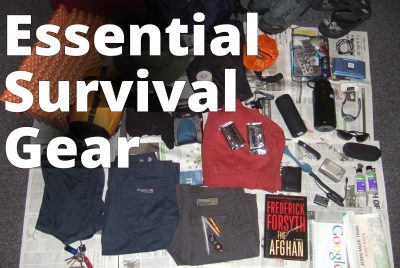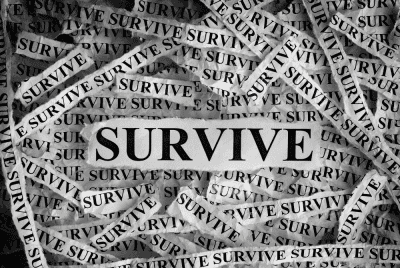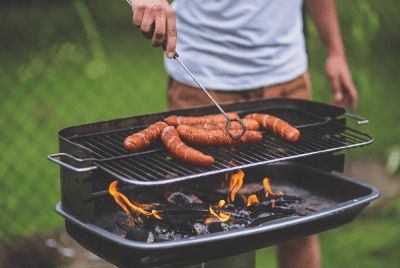Essential Emergency Food Cooking Equipment for Every Household
The Basics: Must-Have Tools for Emergency Cooking
When it comes to emergency food cooking equipment, having the right tools can make all the difference. One must-have tool is a portable stove. Look for a compact and lightweight option that runs on propane or butane fuel.
These stoves are easy to use and provide a reliable heat source for cooking meals in emergency situations.
Another essential tool is a set of cookware specifically designed for outdoor and emergency cooking. Look for lightweight options made from durable materials like stainless steel or titanium.
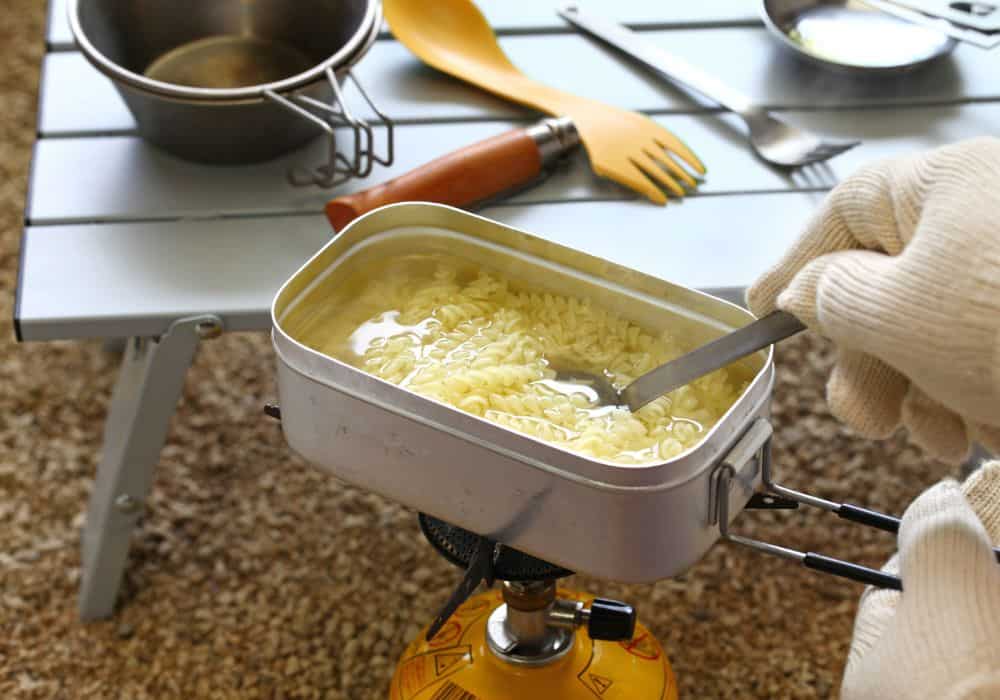
A good set should include pots, pans, and utensils that are versatile enough to cook various types of food.
In addition to a stove and cookware, it’s important to have access to clean water for cooking and drinking purposes during emergencies.
Invest in a high-quality water filter or purifier that can remove bacteria, viruses, and other contaminants from any water source you come across.
This will ensure that you have safe drinking water as well as clean water for preparing meals.
Having these basic tools on hand will help you be prepared for any emergency situation where power may be unavailable or limited.
With the right equipment, you can still enjoy hot meals even when facing challenging circumstances.
Stove Alternatives: Creative Ways to Cook Without Power
When faced with a power outage or emergency situation, it’s important to have alternative cooking methods in place. Without access to your regular stove, there are still plenty of creative ways to cook and prepare meals.
One option is using a portable camping stove or butane burner. These compact devices are easy to use and can be fueled by small propane canisters or butane cartridges.
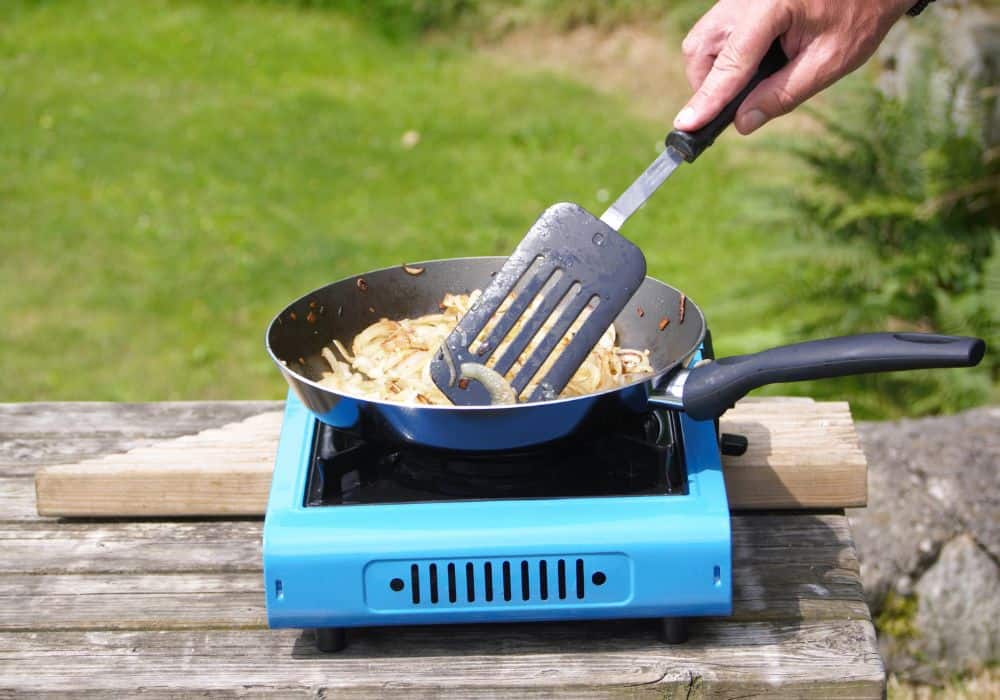
They provide a reliable heat source for boiling water, simmering soups, or even frying up some eggs.
Another stove alternative is the good old-fashioned charcoal grill. If you have one on hand, it can be used as an outdoor cooking station during emergencies.
Simply light up the charcoal and wait for it to reach the desired temperature before placing your pots and pans on top of the grates. This method allows for both direct heat cooking (like grilling meats) and indirect heat cooking (like baking foil-wrapped vegetables). Just make sure to always use caution when handling hot coals!
If you don’t have access to any specialized equipment, you can still get creative with makeshift stoves using items found around the house.
For example, a simple tin can filled with rubbing alcohol can act as a makeshift alcohol stove. By carefully lighting the alcohol inside the can, you create a controlled flame that can be used for basic heating needs like warming canned soup or making hot beverages.
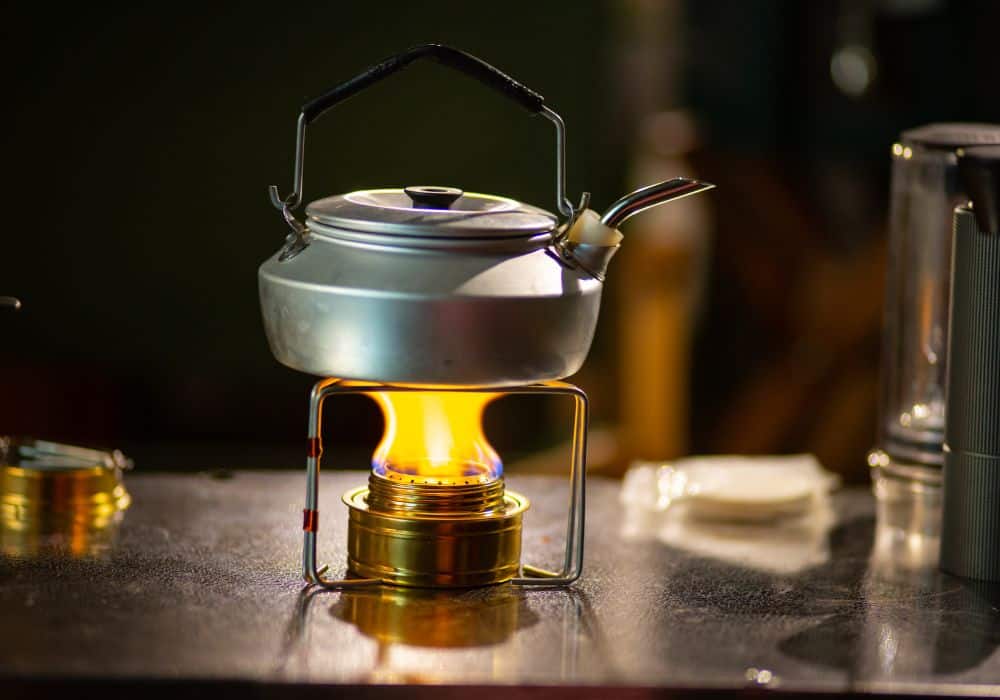
In times of crisis or emergencies where power is unavailable, having these stove alternatives in mind will help ensure that you’re able to cook meals efficiently and safely without relying solely on electricity.
Whether it’s using portable camping stoves, utilizing charcoal grills outdoors, or getting resourceful with homemade setups like alcohol stoves – there are many options available for staying well-fed during challenging times!
Fire It Up: Tips for Safe Outdoor Cooking during Emergencies
When it comes to cooking outdoors during emergencies, safety should always be a top priority. Here are some essential tips to keep in mind for safe outdoor cooking.
First and foremost, make sure you have a designated area for your outdoor cooking setup. This could be a backyard grill or even just an open space away from any flammable materials. It’s important to create a clear boundary so that the flames and heat stay contained.
Secondly, always keep a fire extinguisher nearby when cooking outdoors. Accidents can happen, especially when dealing with open flames and hot surfaces. Having a fire extinguisher within reach can help prevent small fires from turning into larger disasters.
Lastly, practice proper food handling and storage techniques to avoid foodborne illnesses during emergency situations. Keep raw meats separate from other foods and use separate cutting boards and utensils to prevent cross-contamination. Cook foods thoroughly at the appropriate temperatures to kill any harmful bacteria.
By following these simple tips, you can ensure safe outdoor cooking during emergencies while still enjoying delicious meals with your loved ones.
Portable Cookware: Lightweight Options for On-the-Go Meals
When it comes to cooking on the go during emergencies or outdoor adventures, having lightweight and portable cookware is essential. These compact tools allow you to prepare meals quickly and efficiently, without weighing down your backpack or emergency kit.
One popular option for lightweight cookware is a collapsible silicone pot or bowl. These versatile containers can be easily packed away when not in use, taking up minimal space in your bag.
They are also heat resistant and easy to clean, making them perfect for boiling water or cooking simple meals on the trail.
Another great choice for on-the-go cooking is a compact camping stove. These small stoves are designed to be lightweight and portable, making them ideal for emergency situations or camping trips.
Many models run on fuel canisters that are easy to carry and provide a reliable source of heat for cooking food. Some even come with built-in igniters, eliminating the need for matches or lighters.
For those who prefer a more traditional approach, stainless steel mess kits are another excellent option. These kits typically include a pot with a lid that doubles as a frying pan, along with plates, bowls, and utensils. Stainless steel is durable and long-lasting while still being relatively lightweight compared to other materials.
Having lightweight cookware options allows you to stay prepared while minimizing the weight you have to carry during an emergency situation or outdoor adventure.
Whether it’s using collapsible silicone pots/bowls, compact camping stoves, or stainless steel mess kits – these portable tools will ensure that you can enjoy hot meals no matter where you find yourself!
Heating Solutions: Choosing the Right Heat Source for Emergency Cooking
When it comes to emergency cooking, choosing the right heat source is crucial. In situations where power is out or gas lines are disrupted, you need alternative methods to cook your meals.
One option is using a portable camping stove. These stoves are compact and lightweight, making them easy to transport and set up in outdoor environments. They typically run on propane or butane fuel canisters, which provide a steady flame for cooking.
Another heating solution for emergency cooking is a wood-burning stove or fireplace. If you have access to firewood, this can be an excellent option as it provides both heat and a means of cooking food.
However, it’s important to ensure proper ventilation when using these types of heat sources indoors to prevent carbon monoxide poisoning.
Additionally, if you’re looking for a more sustainable and eco-friendly option, consider solar-powered cookers. These devices use sunlight as their energy source and can reach high temperatures suitable for cooking. Solar ovens are especially useful in sunny climates where there’s an abundance of sunlight.
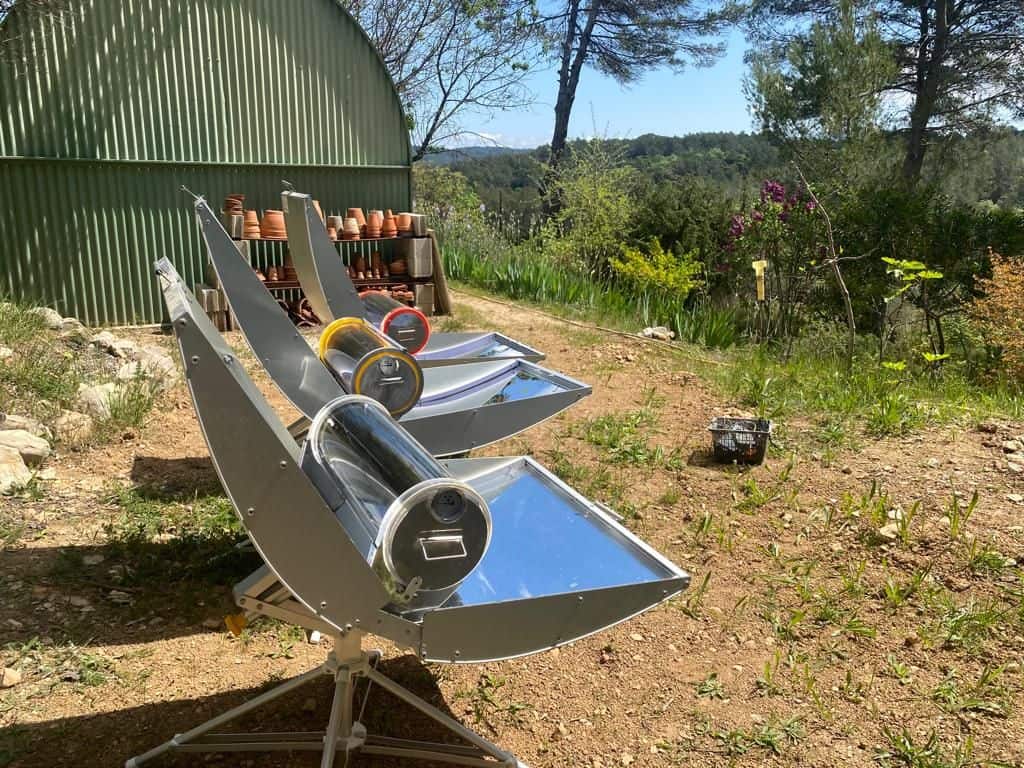
Remember that each heat source has its pros and cons depending on your specific situation and needs during an emergency. It’s essential to assess factors such as portability, fuel availability, safety concerns, and environmental impact when selecting the right heating solution for your emergency cooking needs.
Fuel Options: Pros and Cons of Different Emergency Cooking Fuels
When it comes to emergency cooking, having the right fuel is essential. There are several options available, each with its own pros and cons. Let’s take a look at some of them.
First up, we have propane gas. Propane is a popular choice because it burns clean and efficiently. It is also readily available in portable tanks, making it easy to store and transport.
One downside of propane is that it can be expensive compared to other fuels. Additionally, you need to make sure you have enough propane on hand for extended periods without power.
Another option worth considering is charcoal. Charcoal provides a great flavor for outdoor cooking and can reach high temperatures quickly. It is also relatively inexpensive and widely available.
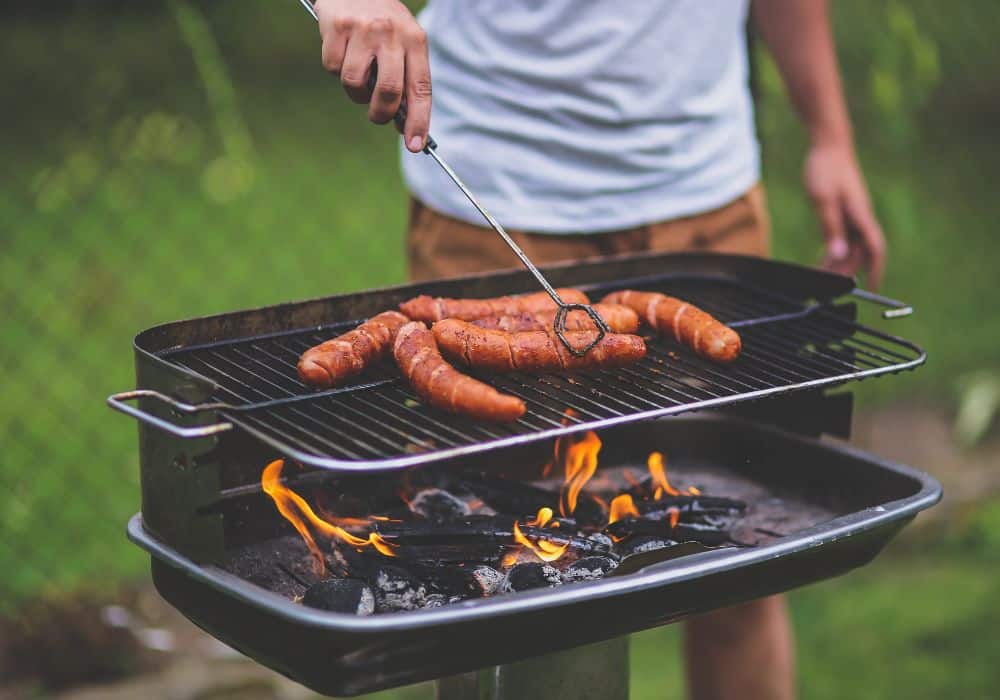
However, charcoal requires more time to heat up compared to other fuels, so if you’re in a hurry or have limited resources, this may not be the best choice.
Lastly, let’s talk about wood as a fuel source for emergency cooking. Wood has been used for centuries as an energy source for cooking and heating purposes.
It’s abundant in most areas and can be found easily during emergencies or camping trips. The main drawback with wood is that it produces smoke when burned, which can affect air quality if used indoors or in confined spaces.
In conclusion (oops!), choosing the right fuel for your emergency cooking needs depends on various factors such as cost, availability, convenience, and personal preference.
Whether you opt for propane gas for its efficiency or enjoy the smoky flavors of charcoal-cooked meals or even go back to basics with wood-burning fires – just remember safety should always come first!
Water Matters: Tools for Purifying and Filtering Water in Emergency Situations
When it comes to emergency situations, having access to clean and safe drinking water is crucial. In these scenarios, it may be necessary to purify and filter water from various sources in order to make it suitable for consumption. There are several tools that can help with this process.
One popular tool for purifying water is a portable water filter. These filters typically use activated carbon or ceramic filters to remove impurities and contaminants from the water.

They are lightweight and easy to carry, making them ideal for outdoor activities or emergency situations where access to clean water is limited.
Another option for purifying water is through the use of purification tablets or drops. These tablets usually contain chemicals such as chlorine dioxide or iodine, which kill bacteria and viruses present in the water.
While they may alter the taste of the water slightly, they are an effective method for ensuring its safety.
In summary, there are various tools available for purifying and filtering water during emergency situations.
Portable filters and purification tablets/drops are two common options that can help ensure access to clean drinking water when traditional sources are unavailable.
It’s essential to have these tools on hand as part of your emergency preparedness kit so that you can stay hydrated and healthy during times of crisis without relying solely on bottled or tap water.
Utensils and Cutlery: Practical Tools for Enjoying Emergency Meals
When it comes to enjoying emergency meals, having the right utensils and cutlery can make a big difference. While you may not have access to your usual kitchen tools during a crisis, there are some practical options that can help you still enjoy your food.
One essential tool is a multi-purpose knife. Look for one that has a sharp blade and can be used for cutting, slicing, and even opening cans if needed.
Another useful item to have is a set of lightweight utensils. Opt for ones made from durable materials like stainless steel or titanium, as they will hold up well in emergency situations.
A fork, spoon, and small serrated knife should cover most of your needs when it comes to eating meals on the go.
In addition to utensils and cutlery, don’t forget about other practical tools such as a can opener and bottle opener. These simple gadgets can come in handy when dealing with canned foods or beverages that require opening.
Having these items readily available will save you time and frustration when it’s time to eat.
Having the right utensils and cutlery can greatly enhance your experience of enjoying emergency meals. By investing in versatile tools like multi-purpose knives and lightweight utensil sets, along with handy gadgets like can openers, you’ll be well-equipped to handle any meal situation during times of crisis without sacrificing taste or convenience.
Go Gourmet: Tips for Enhancing the Flavor of Emergency Food
When it comes to emergency food, flavor may not be the first thing that comes to mind. However, there are ways to enhance the taste of your meals even in crisis situations.
One simple tip is to stock up on spices and seasonings that can add a burst of flavor to otherwise bland dishes. Salt, pepper, garlic powder, and dried herbs like oregano or basil can go a long way in making your emergency meals more enjoyable.
Another way to elevate the taste of your emergency food is by adding some acidity. A squeeze of lemon juice or a splash of vinegar can brighten up flavors and make them more interesting.
Similarly, incorporating some sweetness can also help balance out any dullness in taste. Consider keeping small packets of sugar or honey for this purpose.
Lastly, don’t underestimate the power of texture when it comes to enhancing the enjoyment of your emergency meals.
Crispy toppings like toasted breadcrumbs or crushed crackers can provide a satisfying crunch while adding depth to otherwise monotonous textures. Nuts and seeds are also great options for introducing some variety into your dishes.
Remember, just because you’re dealing with limited resources during an emergency doesn’t mean you have to sacrifice flavor entirely.
With a few simple tricks like using spices, adding acidity and sweetness, as well as playing with different textures – you can turn even basic survival rations into surprisingly tasty meals that will keep morale high during challenging times.
Smart Food Storage: Containers and Preservation Methods for Emergency Meals
When it comes to storing food for emergencies, choosing the right containers is essential. Look for durable and airtight options that can keep your meals fresh and protected from pests.
Plastic storage bins with tight-fitting lids are a popular choice as they are lightweight, stackable, and easy to transport. Mason jars are another great option for preserving dry goods like grains, beans, and spices. They are reusable and provide an excellent seal to keep out moisture.
In addition to proper containers, there are various preservation methods you can use to extend the shelf life of your emergency meals. Canning is a classic technique that involves sealing food in jars or cans after heating it at high temperatures. This method kills bacteria and other microorganisms that could cause spoilage.
Dehydrating is another effective method where water content is removed from the food through low heat or air drying techniques. It not only preserves the food but also reduces its weight, making it easier to store and carry during emergencies.
Vacuum sealing is becoming increasingly popular among preppers as it removes air from packaging before sealing it shut tightly.
This helps prevent oxidation and freezer burn while keeping your food fresh for longer periods of time. Another simple yet effective preservation method is freezing perishable items such as meat or vegetables before they go bad.
Freezing halts bacterial growth and maintains the quality of the food until you’re ready to consume it.
By utilizing appropriate containers along with these preservation methods, you can ensure that your emergency meals remain safe, nutritious, and flavorful when disaster strikes without compromising their quality over time.
Emergency Recipes: Simple and Nutritious Dishes to Try during Crisis
During a crisis, it’s important to have simple and nutritious recipes on hand that can be prepared with limited ingredients and resources. One easy dish to try is a hearty vegetable soup. Start by sautéing onions, carrots, and celery in a pot with some oil or butter.
Then add in any vegetables you have on hand, such as potatoes, tomatoes, or green beans. Pour in enough water or broth to cover the vegetables and let simmer until everything is tender. Season with salt, pepper, and herbs for added flavor.
Another great option for emergency cooking is rice and beans. This classic combination provides a complete protein source while also being filling and delicious.
To make this dish, cook your rice according to package instructions using either water or broth for extra flavor. In another pot, sauté onions and garlic until fragrant before adding in canned or cooked beans of your choice (such as black beans or kidney beans). Stir everything together until heated through and serve over the cooked rice.
For those looking for something sweet during difficult times, consider making banana oatmeal cookies. Mash ripe bananas in a bowl before adding oats (quick-cooking oats work best), cinnamon, honey (or another sweetener of your choice), vanilla extract, and any additional mix-ins like raisins or chocolate chips if available.
Mix well until combined before dropping spoonfuls onto a baking sheet lined with parchment paper. Bake at 350°F (175°C) for about 15-20 minutes or until golden brown.
These simple yet nutritious dishes are just some examples of what you can create during an emergency situation when resources may be limited.
The key is to use what you have on hand creatively while still ensuring balanced meals that provide sustenance during challenging times
Safety First: Precautions and Guidelines for Cooking in Emergency Situations
When it comes to cooking in emergency situations, safety should always be your top priority. Whether you’re using a portable stove or an open fire, there are certain precautions and guidelines that you should follow to ensure the well-being of yourself and those around you.
Firstly, make sure that your cooking area is clear of any flammable materials such as dry leaves or paper. Keep a safe distance from tents or other structures to avoid accidental fires. It’s also important to have a fire extinguisher nearby in case of emergencies.
Secondly, never leave your cooking unattended. Emergencies can happen quickly, and leaving food on the heat unattended can lead to accidents or even injuries. Stay vigilant and keep an eye on what you’re cooking at all times.
Lastly, remember to practice proper hygiene while preparing meals during emergencies. Make sure to wash your hands thoroughly before handling any food items and use clean utensils for cooking.
This will help prevent the spread of bacteria and keep everyone healthy during challenging times.
By following these simple precautions and guidelines, you can ensure a safe cooking experience even in emergency situations. Remember that safety should always come first when it comes to preparing meals during crises.


